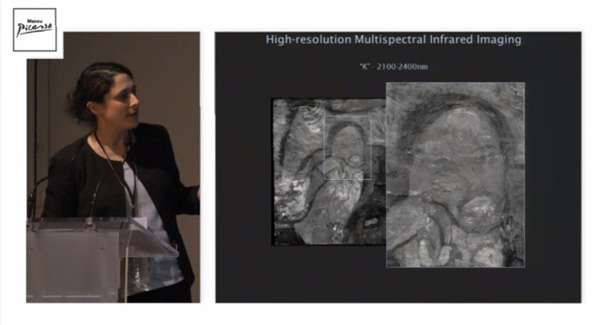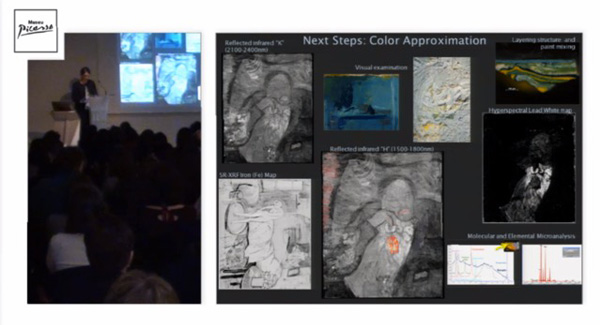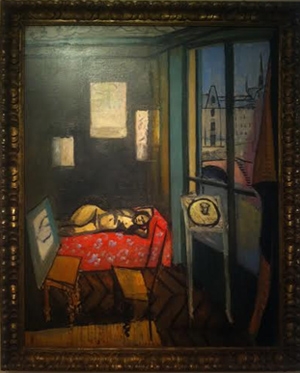
Installation view of Alex Katz’s Brisk Day, Richard Diebenkorn’s Standing Nude, Pierre-Auguste Renoir’s The Judgment of Paris
Have you ever noticed that some of your favorite pieces at the Phillips are always on the move? One of my favorite parts about interning here has been witnessing the movement of pieces in the permanent collection around the galleries. Founder Duncan Phillips once said in regards to his curating tactics, “I avoid the usual period rooms—the chronological sequence . . . My arrangements are for the purpose of contrast and analogy. I bring together congenial spirits among the artists from different parts of the world and from different periods of time.” This intention has been maintained by the curators at the Phillips who are continually exchanging pieces on display with ones in storage, reminding regular visitors and staff members of the breadth that makes up this unique collection of modern and contemporary art.
Walking around the other day, I noticed that the central gallery on the second floor had been completely transformed overnight. Non-representational paintings by Sam Francis, Jake Berthot, and Loren MacIver had been replaced by portraits and figure drawings from an array of artists. I was immediately drawn to a wall of three large and vibrant prints by Alex Katz, a triptych entitled Brisk Day, to the right of which were two monochromatic figure studies, much smaller in scale. The closest was a Richard Diebenkorn charcoal drawing, Standing Nude, neighbored by Pierre-Auguste Renoir’s chalk drawing, The Judgment of Paris. I thought immediately of Phillips’s notion of “congenial spirits” and wondered what type of analogy was made in juxtaposing these three very different works.
The Katz and the Diebenkorn were created almost 25 years apart, while the Renoir drawing precedes the Katz by almost a century. Both Diebenkorn and Renoir chose to focus on the entire human body, whereas Katz zoomed in on a portrait. The more contemporary of the artists chose flat applications of color, while the least contemporary rendered his subjects more realistically and monochromatically. All of these differences are what make for such an interesting arrangement. Seeing them together initiates a discussion of the figure as subject matter, a subject that can be rendered through all different types of mediums and styles. Spanning three different time periods, these works remind us that certain motifs, like the human body, are timeless. Yet the evolution of their representation is a cornerstone of the study of art history, something that can be visualized by doing exactly what Phillips had in mind: juxtaposing the unexpected.
Annie Dolan, Marketing and Communications Intern



